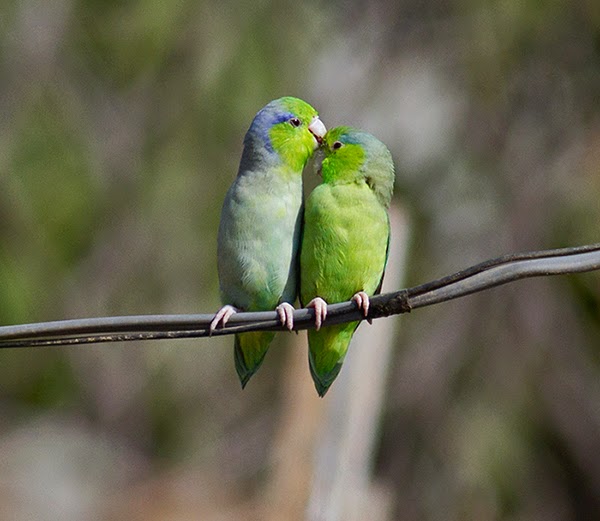After finishing up with the "parakeets of gold" in Buenaventura (i.e. El Oro Parakeets), we were soon on our way heading south, in the direction of Peru. We stopped just short of entering Peru, but could see the Peruvian hills lurking in the distance, as we stopped in at another wonderful reserve of the Jocotoco Conservation Foundation: Jorupe. I have been going to Jorupe since 2005, before the foundation built their fantastic lodge, Urraca Lodge, or "Jay Lodge" (when translated), named after one of its most prominent resident, the steely blue and Ariel white, White-tailed Jay. While we had been in wet, humid evergreen forest in the foothills of the Andes just before, we moved away and into a remarkably different habitat; we now stood among largely leafless deciduous woodland, dotted with giant gnarly Kapok trees. While the ground underfoot had been positively damp in Buenaventura, here in Jorupe it was parched; it had not rained in more than 2 months! This is a joy of southern Ecuador; remarkably different habitats in close geographic proximity.
In reality the birding, in general, within Jorupe, was relatively slow, compared to previous visits. However, the feeders, were magnetic, with action all day long. Some 13 different bird species visited during our time there, some of which were species that never visit feeders anywhere else in the world, giving us great photo opps. of some local species.
First off, I really need to show the flagship bird of the reserve, the beautiful, and bold, White-tailed Jay, a species confined to the dry Tumbesian biogeographic region that covers southwest Ecuador and northern Peru...
First off, I really need to show the flagship bird of the reserve, the beautiful, and bold, White-tailed Jay, a species confined to the dry Tumbesian biogeographic region that covers southwest Ecuador and northern Peru...
Another near constant at Jorupe's brilliant feeders, was the Whooping Motmot, named for its, well, whooping, calls...
I had been secretly hoping that one of the lodge's rarer birds was attending the feeders at the time; Pale-browed Tinamou, a usually extremely secretive bird (again, an endemic species, only known from this region of southern Ecuador and northern Peru). However, on talking to the lodge's knowledgeable local guide, Leo, it became clear it had not been around for a matter of weeks, and so the feeders were looking to be forlorn of this bird. Therefore, imagine my surprise when this individual ignored local advice, and sauntered out into the open...
As well as grain and fruit attracting birds at the main feeders, the lodge also has a series of hummingbird feeders. However, do not be fooled into thinking that these are for hummingbirds; nope, while we were there there was not a single hummingbird in sight within sight of the feeders. However, we were not complaining about this, as instead of hummers, the visitors involved two gaudy species if orioles: Yellow-tailed and White-edged Orioles...
We took a ride into the frontier town of Macara, where people were walking the airport, as it has been out of action for years; in between the town's people out for a walk though, a young male Peruvian Meadowlark roamed the edges, and Pacific Parrotlets dotted the roadside wires...
Away from the feeders, it was oppressively hot, so much so that little was active after a few hours after dawn; all I saw away from there was a single uncooperative Watkins's Antpitta, while at night the tiny Peruvian Screech-Owl emerged to perched aside the lodge, below eye level...
Next stop was Utuana, back up in the mountains among montane forest, which came equipped with extremely colurful hummingbirds...







































No comments:
Post a Comment